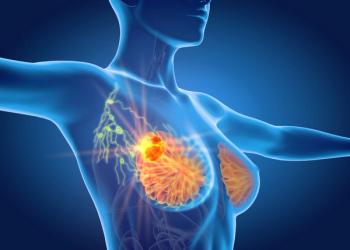
- Oncology Vol 28 No 1S
- Volume 28
- Issue 1S
(P047) Dosimetric and Toxicity Analyses of Reirradiation for Recurrent Pediatric Brain Tumors
Repeat radiation for recurrent brain tumors may be performed in the pediatric population with acceptable short- and long-term toxicity. Establishment of dose-volume guidelines will facilitate treatment planning for these challenging cases.
Benjamin Farnia, BA, Rola H. Georges, BS, CMD, Matthew Palmer, MBA, CMD, Jinzhong Yang, PhD, Anita Mahajan, MD, Susan L. McGovern, MD, PhD; UT MD Anderson Cancer Center
Background: Reirradiation is increasingly used to treat recurrent pediatric brain tumors, but data-driven dose-volume constraints for repeat radiation are lacking.
Methods: Records of 12 pediatric patients treated with reirradiation for recurrent brain tumors between July 2009 and May 2013 at MD Anderson Cancer Center were retrospectively reviewed for toxicity and outcomes. To determine dosimetric parameters, Digital Imaging and Communications in Medicine (DICOM) datasets of the initial and repeat radiation plans were deformed and merged to determine the maximum dose to 0.03 cc of the optic chiasm, optic nerves, spinal cord, brainstem, cochleae, pituitary, and normal brain and to 1 cc of the brainstem on the individual and composite plans.
Results: Median follow-up was 3.5 years. Median age at initial radiation was 4.5 years and 6.7 years at repeat radiation. Patients had medulloblastoma (n = 4), primitive neuroectodermal tumor (PNET) (n = 2), anaplastic ependymoma (n = 2), or other tumors (n = 4). All patients initially received proton radiotherapy to a median dose of 55.8 cobalt grey equivalent (CGE). At recurrence, patients were treated with intensity-modulated radiation therapy (IMRT) (n = 6), proton (n = 5), or both (n = 1) to a median total dose of 42.5 CGE. All patients completed the planned second course of radiation. At last follow-up, four patients were alive with disease, five were dead, and three had no evidence of disease. No patient developed radiation necrosis. Two patients developed optic pathway defects, likely related to tumor progression. Four patients developed secondary hypothyroidism (median composite maximum dose of 36 CGE to pituitary), and one patient developed growth hormone deficiency (composite maximum dose of 39 CGE to pituitary).
Conclusion: Repeat radiation for recurrent brain tumors may be performed in the pediatric population with acceptable short- and long-term toxicity. Establishment of dose-volume guidelines will facilitate treatment planning for these challenging cases.
Articles in this issue
Newsletter
Stay up to date on recent advances in the multidisciplinary approach to cancer.
















































































